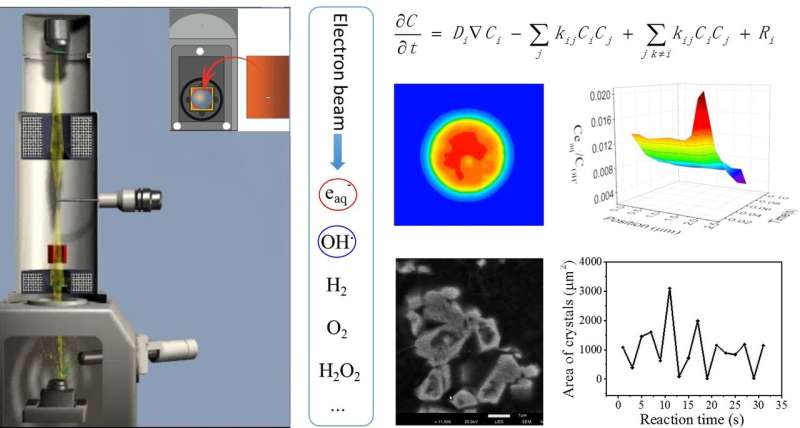Scientists reveal dynamic silver crystallization by in-situ SEM

Different structured materials have different properties and applications. Disclosing the formation mechanism of material structures may help develop routes for the rational synthesis. However, how the materials structures grow and how to manipulate their growth remain unclear.
A research team led by Prof. Han Yongsheng from Institute of Process Engineering (IPE) of Chinese Academy of Sciences employed an in-situ scanning electron microscope to disclose silver dynamic crystallization.
Their study, published in Research, showed the formation of materials and discovered the "secret hands" putting each atom in its position.
Inspired by the concept of mesoscience, researchers initiated a research line to control the formation of materials structures via chemicals diffusion and reaction.
At different diffusion and reaction conditions, the chemical distribution around the growth front of crystals is different, which results in a kinetics-dominated anisotropic growth of structures, forming different complex materials structures.
Although the general role of interface chemical concentration was confirmed, how the ever-changing chemical distribution influences the growth of material structure as well as the final shape of products is mostly based on the speculation, which limits our understanding on the design and rational synthesis of material structures.
In this study, a liquid cell confined a layer of the solution of silver nitrate between two membranes, which was hermetically sealed for the high vacuum of the microscope.
The electron beam enters into the cell through an electron-transparent silicon nitride film, enabling a real-time imaging of silver crystallization in the liquid. When the electron beam irradiated the liquid solution, various transient products including hydrated electrons and hydroxyl radicals, were generated.
The researchers calculated the radicals distribution in the liquid cell during the irradiation, and found that the reductive hydrate electrons and the oxidative hydroxyl radicals fluctuated in the cell.
"This fluctuation leads to a reversibly dynamic crystallization of silvers, which is attributed to the alternant dominance of the reduction and oxidation reactions in the cell," said Prof. Han.
Furthermore, a regulation of the electron dose rate changed the radicals concentration, leading to the formation of diverse structures of silver crystals, which confirmed the dominant role of chemical concentration in the structural evolution of materials.
This study showed that a control of chemical concentration in the growth front of crystals may lead to the rational synthesis of material structures.
Provided by Chinese Academy of Sciences





















